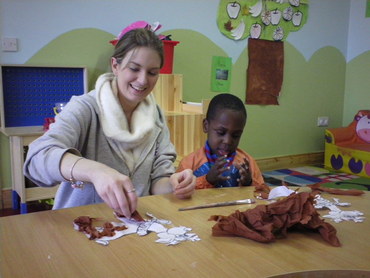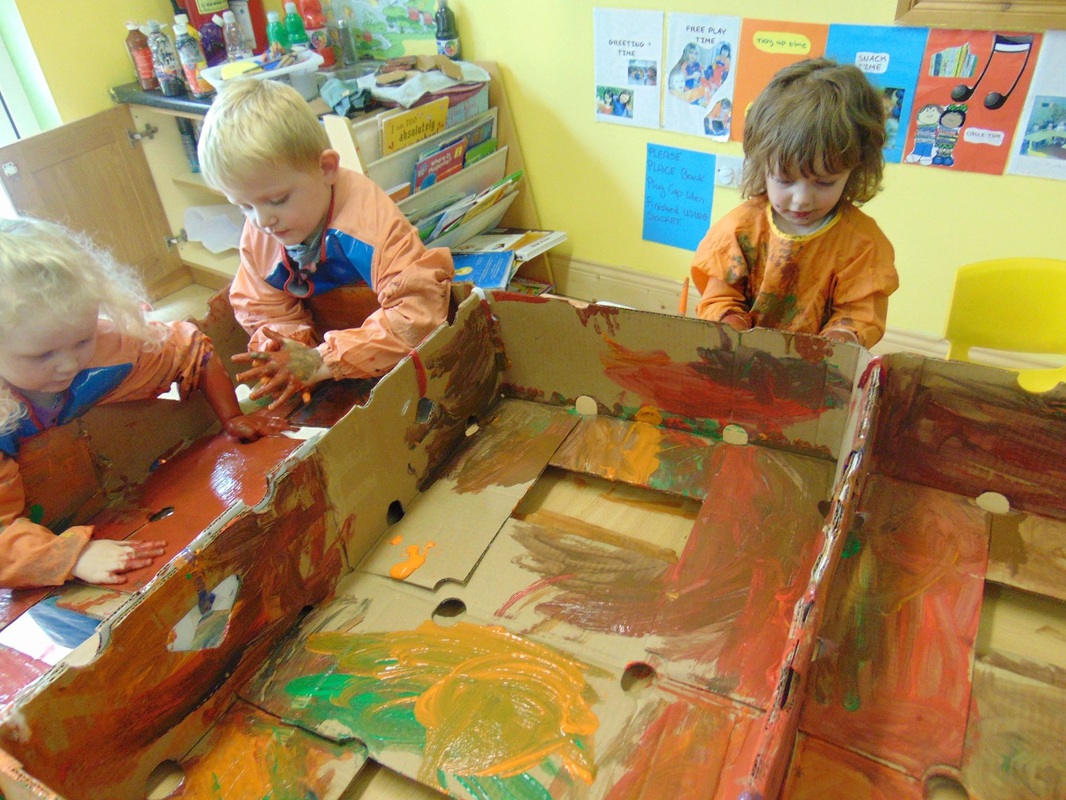|
|
Staff in the preschool recognizes that children's play items are the "raw materials" of learning. The space and materials in preschool room are carefully chosen and arranged to appeal to children and promote the curriculum's content goals. The goal of the preschool is to encourage children to be happy, competent and independent learners.
Our preschool:
The preschool room is divided into interest/ learning areas equipped for distinct kinds of play. These areas are chosen to reflect children's natural interests: |
|
|
The materials in each area are carefully selected to reflect children's interests and developmental levels. The staff choose many open-ended materials — materials that can be used in a variety of ways, such as blocks in all sizes, art materials or natural materials.
The staff considers it especially important to have plenty of real items that reflect children's lives, for example, cooking tools, small appliances that no longer work, dress-up clothes, and other objects and tools from children's home environments. These items reflect children's home cultures and allow children to imitate adults. To help children find and put away materials themselves, materials are stored in consistent places in the classroom, on low shelves or on the floor, and in containers that children can see into and handle. Shelves and containers have labels that make sense to children; for example, the labels might contain tracings of the object or photos of the actual object.
The staff considers it especially important to have plenty of real items that reflect children's lives, for example, cooking tools, small appliances that no longer work, dress-up clothes, and other objects and tools from children's home environments. These items reflect children's home cultures and allow children to imitate adults. To help children find and put away materials themselves, materials are stored in consistent places in the classroom, on low shelves or on the floor, and in containers that children can see into and handle. Shelves and containers have labels that make sense to children; for example, the labels might contain tracings of the object or photos of the actual object.
High/Scope provides children with:
- A consistent and flexible daily routine which provides for child and adult initiated activities
- Opportunities to choose, plan, carry out and reflect on their activities
- Opportunities for children to engage in the active participatory learning process
- Adults who value and appreciate children and provide a creative and supportive learning climate
Outcomes for Children
- Children develop self-confidence, initiative, creativity and problem-solving skills
- Children learn about social relationships, the world about them, maths, science and technology, reasoning and language
- Children develop positive attitudes to self, others and to future learning


